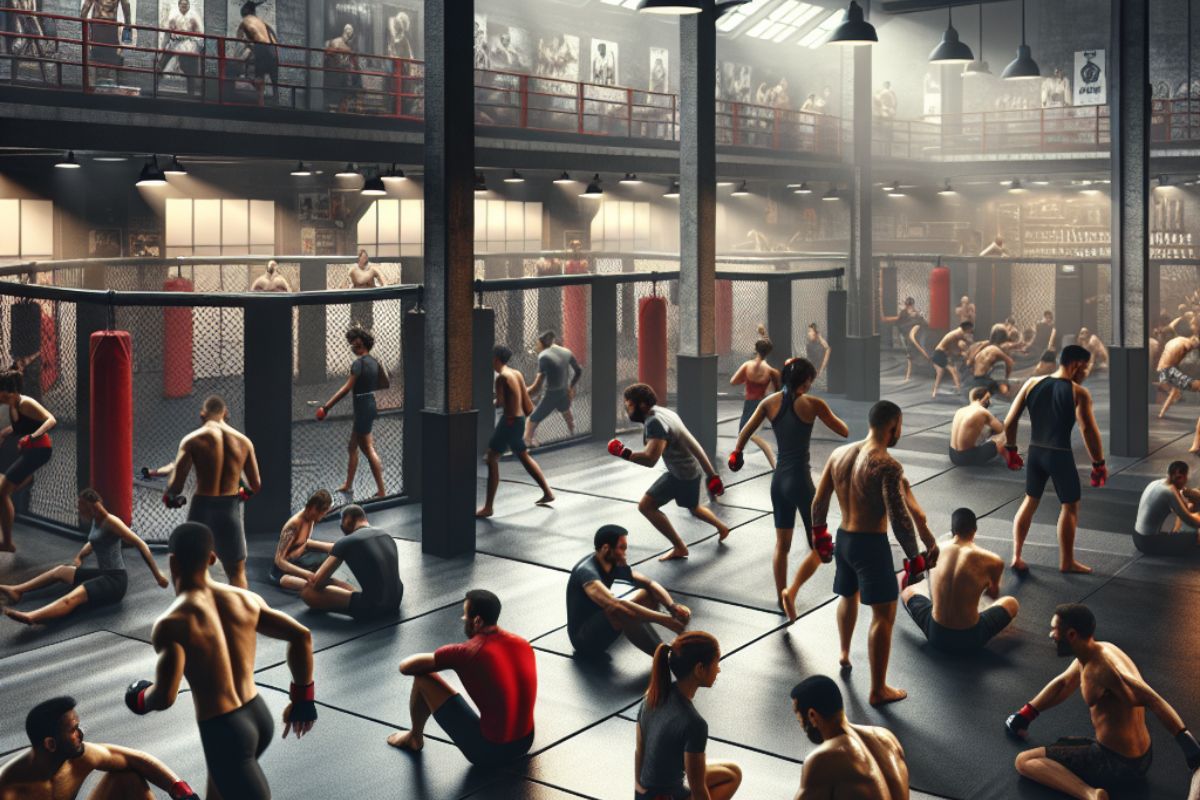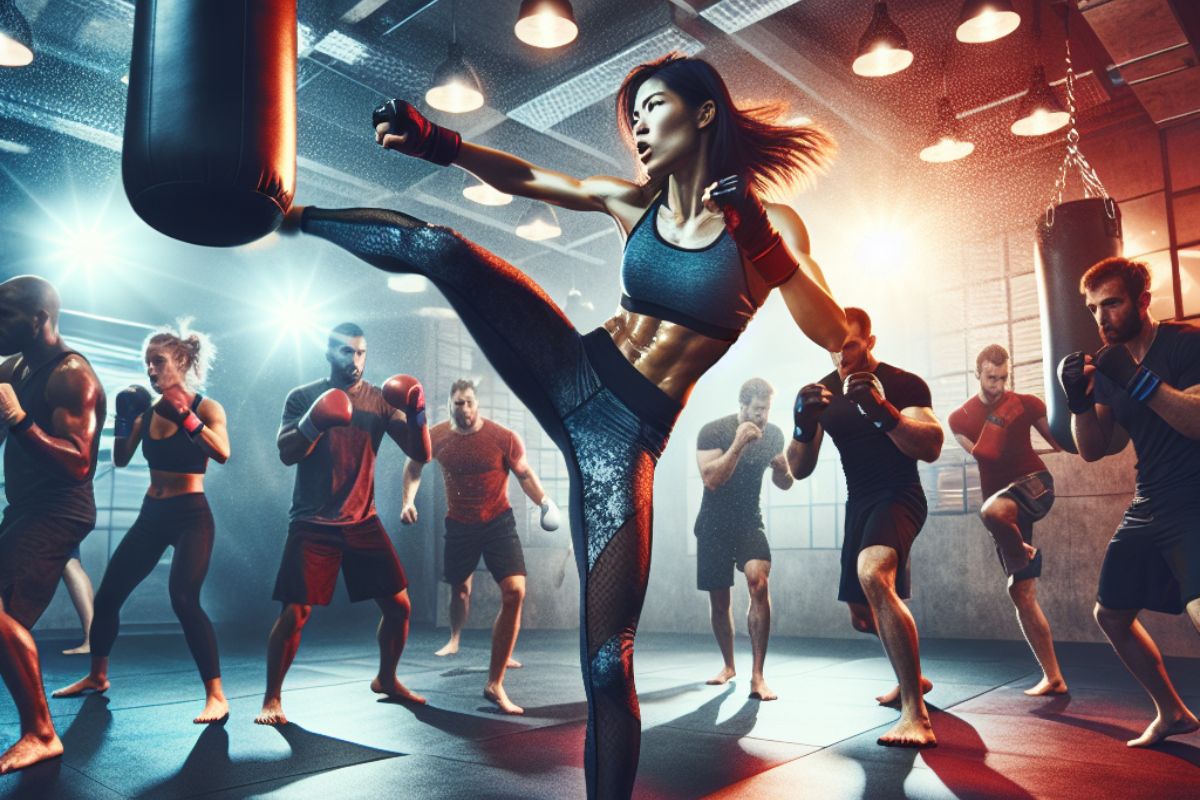In a world where fitness and self-defense skills are increasingly valued, Mixed Martial Arts (MMA) has emerged as a popular choice for those looking to challenge themselves physically and mentally. Whether you’re aiming to improve your fitness, learn self-defense, or even step into the octagon, finding the right MMA gym is crucial. This post will guide you through the essentials of identifying the best fight training facilities in your area, ensuring that you can train like a pro and, perhaps, discover your inner fighter.
Discovering the World of MMA
Mixed Martial Arts combines techniques from various combat sports, including boxing, Brazilian Jiu-Jitsu, karate, and wrestling. This hybrid approach makes MMA one of the most versatile and comprehensive forms of martial arts today. For beginners and seasoned athletes alike, understanding the breadth of MMA is essential to choosing the right gym for your training needs.
The popularity of MMA has surged globally. With major promotions like the UFC bringing the sport into mainstream culture, many gyms now offer specialized MMA training programs. These gyms cater to a wide range of skill levels and interests, whether you’re looking for competitive training or just an intense workout.
Not only does MMA provide an effective means of self-defense, but it also promotes overall fitness, agility, and mental discipline. The rigorous nature of MMA training means that participants can expect improved cardiovascular health, increased strength, and enhanced mental resilience.
The Benefits of MMA Training
Engaging in MMA training offers numerous benefits beyond just physical fitness. One of the most appealing aspects of MMA is its ability to build self-confidence and discipline. Training in a structured environment under experienced coaches allows individuals to push their limits and achieve personal growth.
Additionally, MMA training develops practical self-defense skills. The diverse techniques taught in MMA classes equip practitioners with the ability to defend themselves in various situations, providing peace of mind and security.
Furthermore, MMA fosters a sense of community among participants. Many find lifelong friends in their training partners, and the supportive atmosphere in MMA gyms encourages camaraderie and teamwork. This sense of belonging can enhance motivation and make training more enjoyable.
Understanding Different MMA Training Styles
In MMA, different training styles cater to various strengths and preferences. Some fighters excel in striking disciplines like Muay Thai, while others thrive in grappling arts such as Brazilian Jiu-Jitsu. Understanding these styles can help you choose a gym that aligns with your interests and goals.
Striking-focused gyms emphasize stand-up combat techniques, teaching skills such as punches, kicks, and elbows. These gyms often incorporate elements of kickboxing and boxing to develop powerful and precise striking abilities.
Conversely, grappling-focused gyms concentrate on ground-fighting techniques like takedowns, submissions, and positional control. Brazilian Jiu-Jitsu is a prominent component of grappling training, emphasizing leverage and technique over brute strength.
Some gyms offer a balanced approach, integrating both striking and grappling disciplines. This comprehensive training style allows practitioners to become proficient in all areas of MMA, preparing them for the dynamic nature of the sport.
Choosing the Right MMA Gym for You
Selecting the best MMA gym involves considering several factors to ensure it meets your needs and fits your lifestyle. Location is a primary consideration, as accessibility plays a crucial role in maintaining a consistent training schedule.
Additionally, evaluate the gym’s reputation and credentials. Look for facilities with experienced coaches who have a track record of success in training fighters. Research their backgrounds and achievements to ensure they possess the expertise to guide your progress.
It’s also important to assess the gym’s training environment. A clean, well-equipped facility with a positive atmosphere can significantly enhance your training experience. Visit the gym beforehand to get a feel for the space and observe a class to see if it aligns with your expectations.
Exploring MMA Gym Amenities
The amenities offered by an MMA gym can enhance your training experience and contribute to your progress. Many gyms provide top-notch equipment such as heavy bags, mats, and weight-training gear, allowing you to diversify your workouts.
Some gyms offer additional resources like nutrition counseling and physical therapy, which can be invaluable for optimizing performance and recovery. These services demonstrate a commitment to holistic athlete development and can be a deciding factor when choosing a gym.
Furthermore, consider the class schedule and variety of programs available. A gym with a wide range of classes, from beginner to advanced levels, ensures that you can progress at your own pace and continue challenging yourself as you improve.
Training with Experienced MMA Coaches
Having skilled and knowledgeable coaches is pivotal to your success in MMA. Experienced trainers bring a wealth of expertise to the table, offering valuable insights and personalized guidance to help you reach your full potential.
A good coach recognizes the unique strengths and weaknesses of each student and tailors training accordingly. They provide constructive feedback and mentorship, fostering an environment of growth and continuous improvement.
When selecting a gym, inquire about the coaching staff’s qualifications and experience. Look for coaches who have competed at high levels or have successfully trained fighters, as their firsthand knowledge can be instrumental in honing your skills.
Building Endurance and Strength
MMA requires a high level of physical fitness, and building endurance and strength is a fundamental part of training. Cardiovascular conditioning is essential for sustaining energy throughout rounds, while muscular strength provides the power needed for strikes and takedowns.
Many MMA gyms incorporate conditioning exercises into their programs, ensuring that athletes develop the stamina and resilience required for competition. These workouts often include interval training, circuit exercises, and strength training to build functional fitness.
Additionally, training methodologies such as plyometrics and resistance training help enhance explosive power and agility. By incorporating these elements into your routine, you can optimize your performance inside the cage or ring.
Enhancing Flexibility and Agility
Flexibility and agility are crucial components of MMA, allowing fighters to move fluidly and efficiently. Stretching routines and mobility exercises are commonly integrated into training sessions to improve flexibility and prevent injuries.
Agility drills, such as ladder exercises and cone drills, develop quickness and coordination, enabling fighters to react swiftly to opponents’ movements. These drills enhance footwork and balance, essential skills for maintaining control in dynamic situations.
Incorporating yoga or Pilates into your training regimen can further enhance flexibility and balance. These practices promote mindfulness and body awareness, contributing to improved performance and injury prevention.
Developing Mental Toughness
The mental aspect of MMA is as important as the physical. Developing mental toughness is crucial for overcoming challenges and performing under pressure. Many MMA gyms emphasize mental conditioning as part of their training programs.
Visualization techniques can help athletes prepare mentally for competition by rehearsing scenarios and building confidence. Additionally, meditation and breathing exercises promote focus and composure, allowing fighters to stay calm in high-pressure situations.
Coaches often provide guidance on goal-setting and mental strategies to help athletes maintain motivation and resilience. Cultivating a strong mindset is key to achieving success in MMA and navigating the ups and downs of training.
Finding Your MMA Community
Joining an mma gyms near me is not just about physical training; it’s also about becoming part of a community of like-minded individuals. The camaraderie and support found in these environments can be incredibly motivating and rewarding.
Many gyms host events, competitions, and social gatherings, fostering a sense of belonging and unity among members. These opportunities enable you to connect with fellow enthusiasts, share experiences, and build lasting friendships.
Being part of an MMA community provides a support network that encourages accountability and progress. Training alongside others who share your passion can inspire you to push beyond your limits and achieve your goals.
Setting Goals and Tracking Progress
Setting clear goals is essential for measuring progress and staying motivated on your MMA journey. Whether your objective is to compete, improve fitness, or learn self-defense, defining your goals helps guide your training efforts.
Many MMA gyms offer progress tracking tools and assessments to help you monitor your development. Regular evaluations of your skills and fitness levels can provide valuable feedback on your strengths and areas for improvement.
Celebrate milestones and achievements along the way to maintain motivation and confidence. Setting both short-term and long-term goals ensures that you remain focused and committed to your MMA training endeavors.
Conclusion
Choosing the right MMA gym is a significant step towards achieving your fitness and self-defense goals. Whether you’re just starting out or looking to take your skills to the next level, the right training environment can make all the difference. With experienced coaches, top-notch facilities, and a supportive community, you’ll be well on your way to discovering your full potential as a fighter.
Remember, the path to mastery is a marathon, not a sprint. Stay curious, stay open to learning, and most importantly, enjoy the journey. If you’re ready to explore more about MMA and find the best gyms near you, don’t hesitate to reach out to local clubs or consult online resources for additional guidance.











